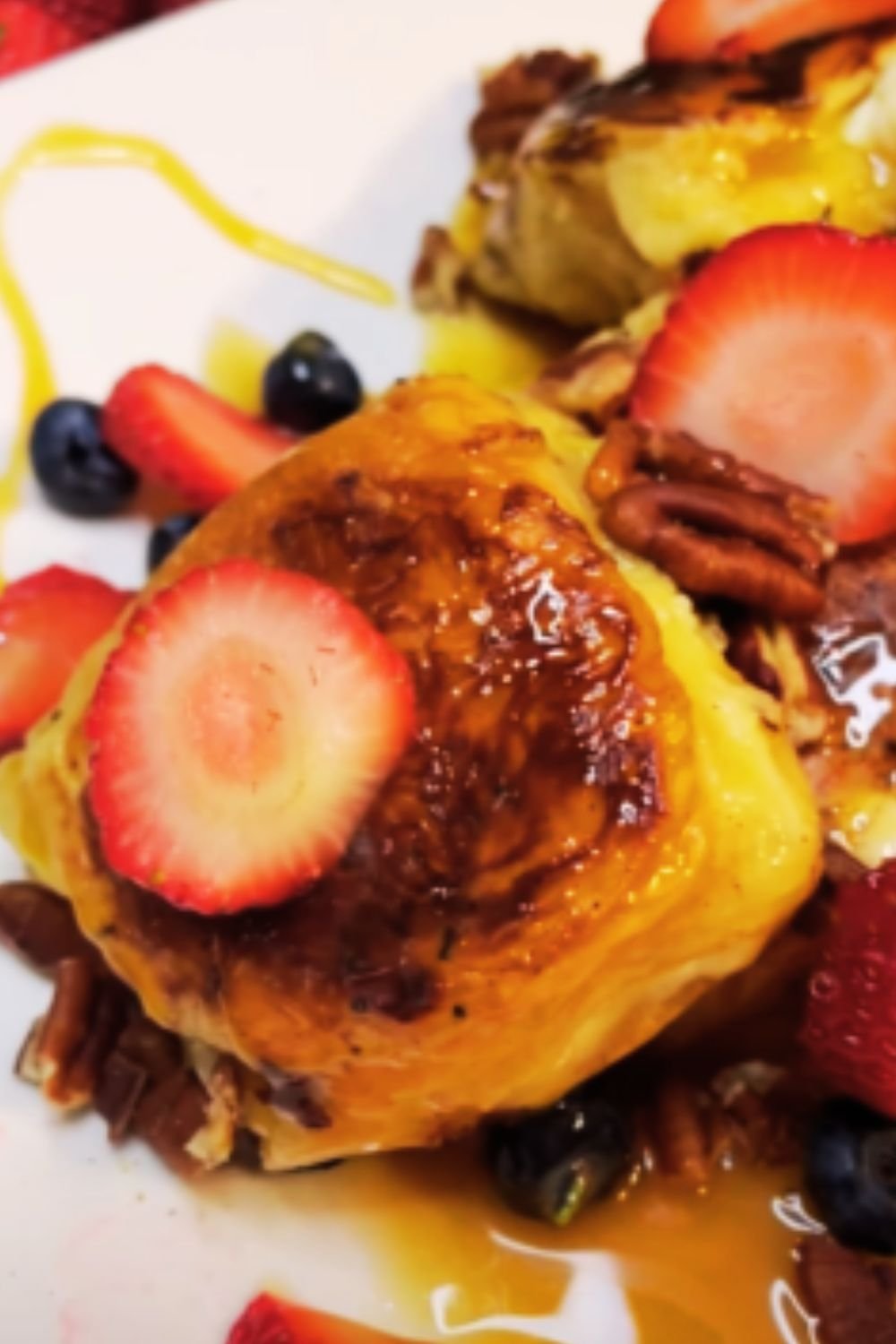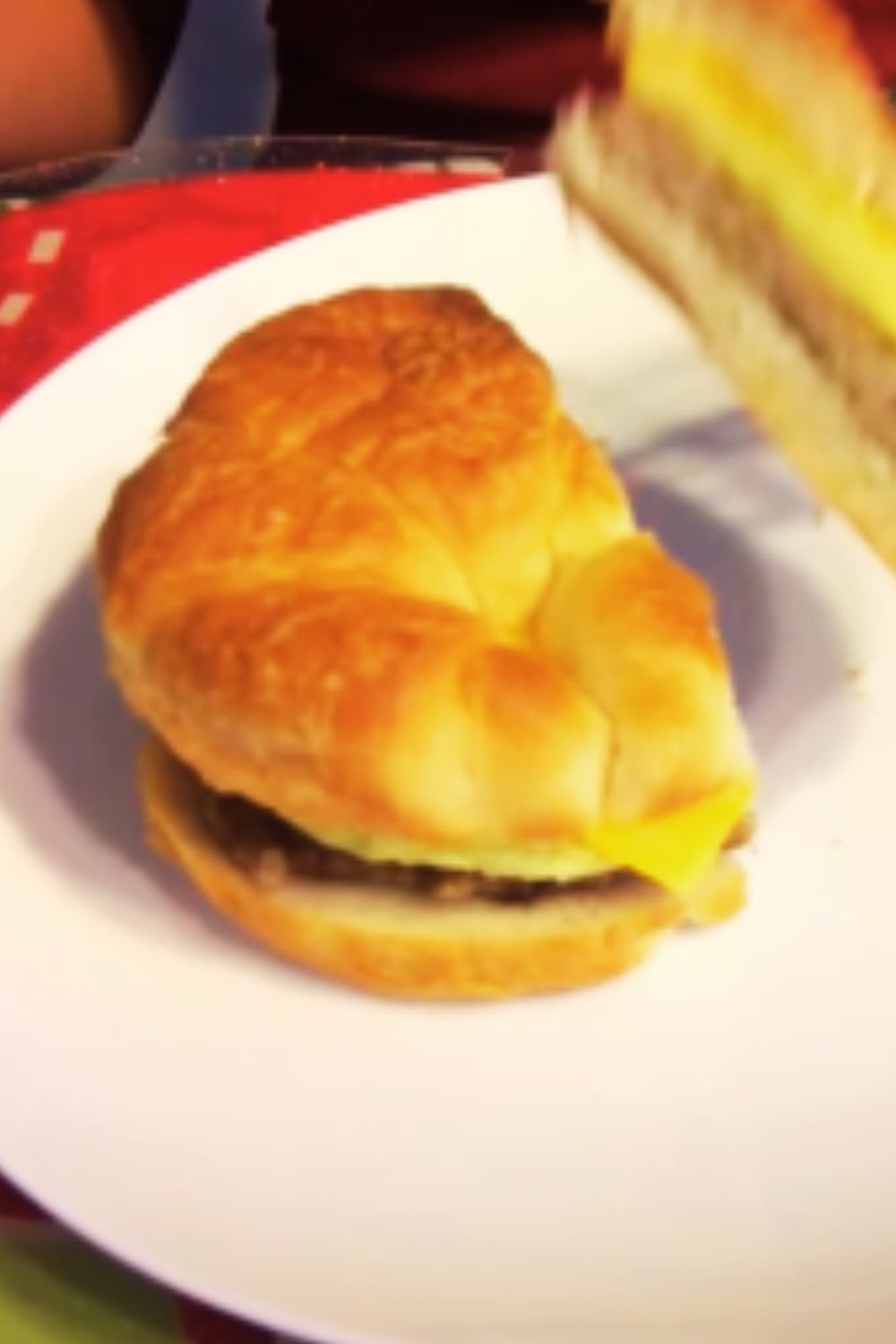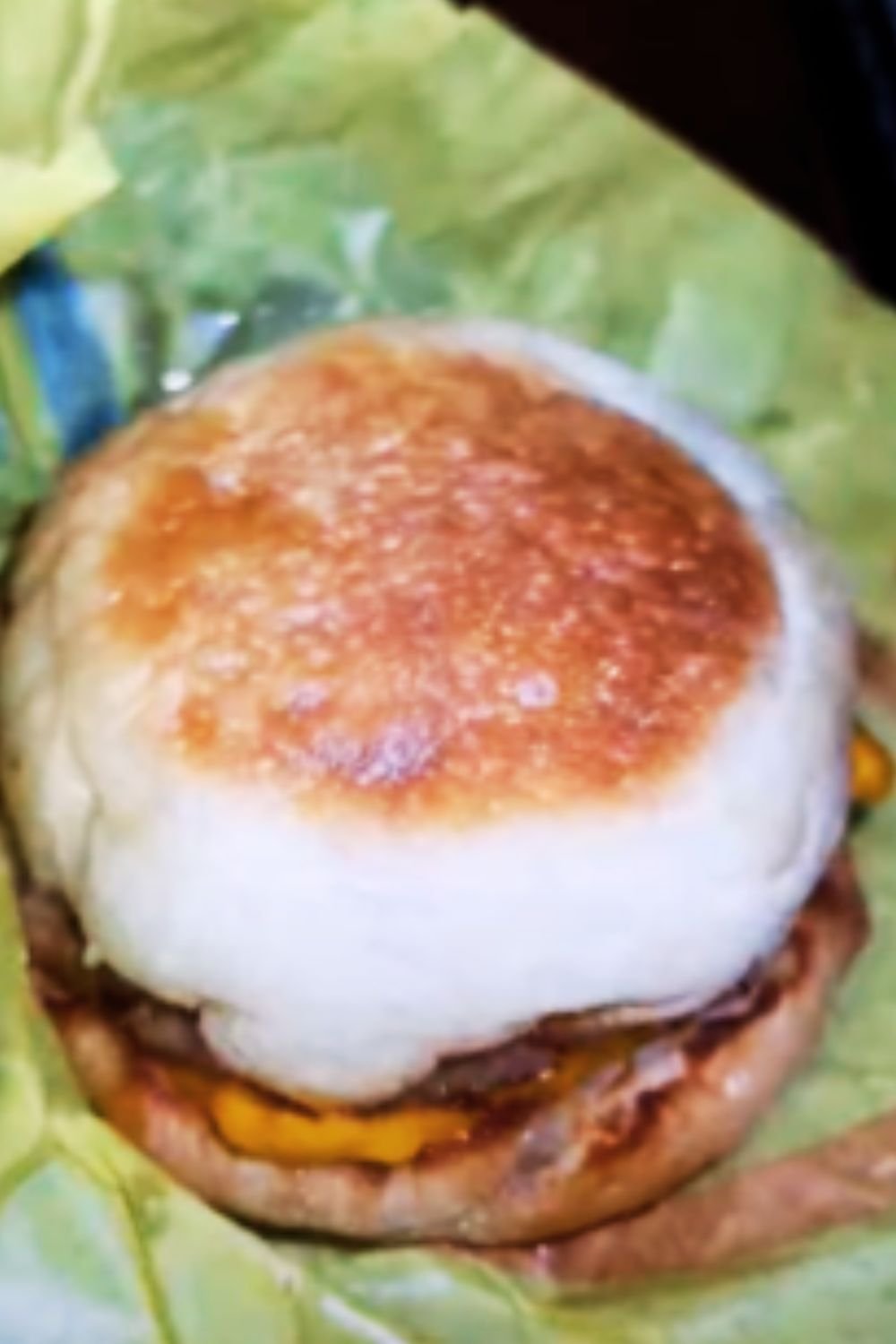There’s something magical about transforming ordinary bread into an extraordinary breakfast experience. When I first discovered cream cheese stuffed French toast, it completely revolutionized my weekend morning routine. This decadent dish combines the comfort of classic French toast with the rich, tangy surprise of cream cheese filling, creating a breakfast that feels like dessert but satisfies like a proper meal.
The beauty of cream cheese stuffed French toast lies in its perfect balance of textures and flavors. The crispy, golden exterior gives way to custardy bread that’s been soaked in a perfectly spiced egg mixture, while the cream cheese center adds a luxurious richness that elevates this dish from simple to spectacular. I’ve been perfecting this recipe for years, and I’m excited to share every tip and trick I’ve learned along the way.
What Makes Cream Cheese Stuffed French Toast Special
Cream cheese stuffed French toast represents the evolution of traditional French toast into something truly extraordinary. Unlike regular French toast, which relies solely on the bread and egg mixture for flavor and texture, this version introduces a creamy, tangy element that creates contrast and depth in every bite.
Essential Components:
- Bread Selection: Thick-cut challah, brioche, or Texas toast that can hold the filling
- Cream Cheese Mixture: Softened cream cheese combined with complementary flavors
- Custard Base: Eggs, milk, and seasonings that create the classic French toast coating
- Cooking Method: Careful temperature control for perfect browning and thorough cooking
The cream cheese filling serves multiple purposes beyond just adding flavor. It creates moisture within the bread, preventing the interior from becoming dry while the exterior develops that coveted golden crust. The tangy notes from the cream cheese also balance the sweetness of any syrups or toppings you might add.
Selecting the Perfect Bread
The foundation of exceptional cream cheese stuffed French toast begins with choosing the right bread. I’ve experimented with numerous varieties over the years, and certain characteristics consistently produce superior results.
Optimal Bread Characteristics:
- Thickness: Slices should be at least 1 to 1.5 inches thick to accommodate filling
- Density: Slightly dense breads hold up better during soaking and cooking
- Age: Day-old bread actually works better than fresh, as it absorbs custard more effectively
- Structure: Breads with a tight crumb prevent filling from leaking out
Top Bread Choices:
| Bread Type | Flavor Profile | Texture | Best For |
|---|---|---|---|
| Challah | Rich, slightly sweet | Dense, tender crumb | Traditional preparation |
| Brioche | Buttery, luxurious | Light but sturdy | Elegant presentations |
| Texas Toast | Mild, versatile | Thick, substantial | Hearty appetites |
| Sourdough | Tangy, complex | Chewy, robust | Flavor contrast |
| French Bread | Neutral, clean | Firm exterior, soft interior | Classic technique |
When selecting bread, I always look for loaves that feel substantial in my hands. The bread should have enough structure to support the weight of the filling without becoming soggy, yet remain tender enough to absorb the custard mixture thoroughly.
Creating the Perfect Cream Cheese Filling
The cream cheese filling is where creativity meets technique. I’ve developed several variations over the years, each offering a unique flavor profile that transforms the entire dish.
Basic Cream Cheese Mixture:
- 8 oz cream cheese, softened to room temperature
- 2 tablespoons powdered sugar
- 1 teaspoon vanilla extract
- Pinch of salt
Flavor Variations:
| Variation | Additional Ingredients | Flavor Notes |
|---|---|---|
| Classic Vanilla | 1 tsp vanilla, 2 tbsp powdered sugar | Clean, sweet, universally appealing |
| Cinnamon Spice | 1 tsp cinnamon, 1/4 tsp nutmeg | Warm, comforting, autumn-inspired |
| Berry Swirl | 2 tbsp berry jam, 1 tbsp lemon zest | Fruity, bright, summer-fresh |
| Orange Zest | 2 tbsp orange zest, 1 tbsp honey | Citrusy, sophisticated, refreshing |
| Maple Pecan | 2 tbsp maple syrup, 1/4 cup chopped pecans | Rich, nutty, indulgent |
The key to perfect cream cheese filling lies in achieving the right consistency. The mixture should be smooth and spreadable but not so thin that it oozes out during cooking. I always bring my cream cheese to room temperature several hours before preparing the filling, which prevents lumps and creates a silky texture.
When mixing the filling, I use a hand mixer on medium speed for about two minutes. This incorporates air into the mixture, making it lighter and easier to spread. The filling should hold its shape when spooned but spread easily with a knife.
Mastering the Custard Base
The custard base is what transforms plain bread into French toast, and getting it right is crucial for success. I’ve refined my custard recipe through countless breakfast experiments, and this combination never fails to deliver.
Perfect Custard Formula:
- 6 large eggs
- 1/2 cup whole milk
- 1/4 cup heavy cream
- 2 tablespoons sugar
- 1 teaspoon vanilla extract
- 1/2 teaspoon cinnamon
- 1/4 teaspoon nutmeg
- Pinch of salt
The ratio of eggs to liquid is critical. Too many eggs create a rubbery texture, while too much liquid results in soggy bread that won’t hold together. I’ve found that using a combination of milk and cream provides the perfect balance of richness and consistency.
Custard Preparation Technique:
- Whisk eggs thoroughly in a shallow dish until completely smooth
- Add sugar and whisk until dissolved
- Gradually incorporate milk and cream to prevent curdling
- Add vanilla and spices, whisking until evenly distributed
- Strain mixture through fine-mesh sieve to remove any lumps
The custard should be smooth and well-integrated, with no streaks of egg white visible. I always prepare the custard in a shallow dish that’s large enough to accommodate my bread slices comfortably.
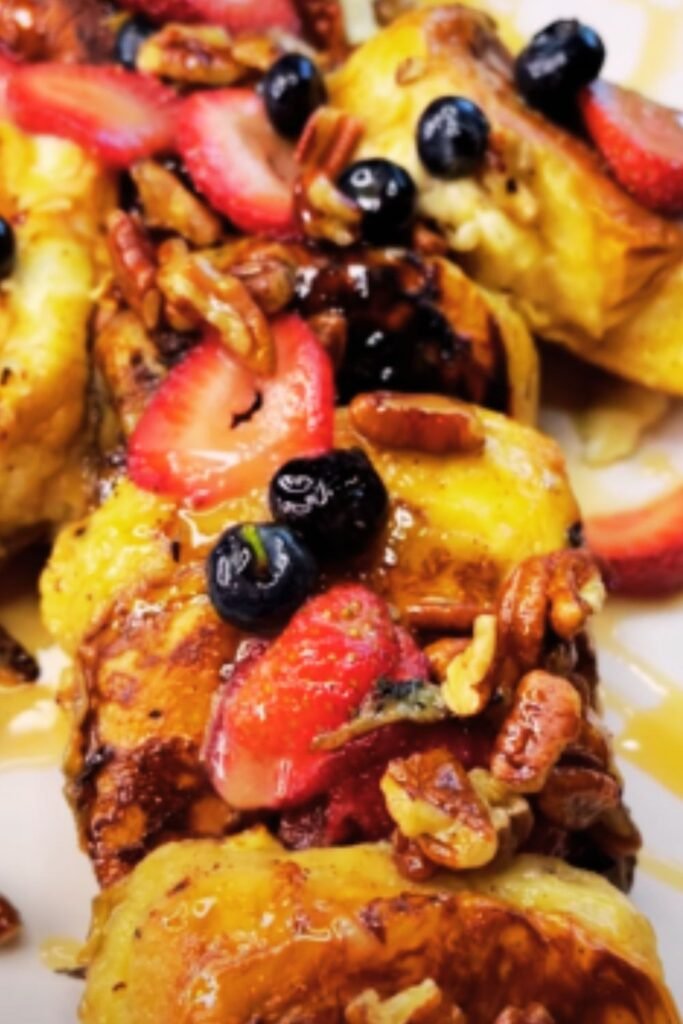
Step-by-Step Assembly Process
Assembling cream cheese stuffed French toast requires patience and attention to detail. The goal is to create a sealed pocket that won’t leak during cooking while ensuring even distribution of filling.
Preparation Steps:
- Create the Pocket: Using a sharp paring knife, cut a horizontal slit in each bread slice, starting about 1/2 inch from one edge and cutting about 3/4 of the way through the slice. The opening should be wide enough to accommodate filling but narrow enough to seal naturally.
- Fill the Pocket: Using a spoon or piping bag, carefully insert cream cheese filling into the pocket. I typically use about 2-3 tablespoons of filling per slice, depending on the bread size. Distribute the filling evenly throughout the pocket.
- Seal the Edges: Gently press the edges of the bread together to seal the pocket. The bread should close naturally without forcing, which could cause tearing.
- Custard Soaking: Place stuffed bread slices in the custard mixture, allowing them to soak for 2-3 minutes per side. The bread should absorb the custard without becoming overly saturated.
Assembly Tips:
- Work with one slice at a time to prevent the bread from becoming too soft
- Keep filled slices refrigerated if not cooking immediately
- Use a gentle touch when handling soaked bread to prevent breaking
- Ensure custard penetrates evenly by occasionally pressing lightly on the surface
Cooking Techniques for Perfect Results
The cooking process is where technique truly matters. I’ve learned that controlling temperature and timing is essential for achieving that perfect golden exterior while ensuring the interior is thoroughly cooked and the cream cheese is warmed through.
Equipment Requirements:
- Large, heavy-bottomed skillet or griddle
- Medium-low heat setting
- Butter or neutral oil for cooking
- Spatula wide enough to support entire slices
Cooking Process:
- Preheat: Heat skillet over medium-low heat for 3-4 minutes before adding any fat
- Add Fat: Use 1-2 tablespoons of butter per batch, allowing it to melt and coat the pan evenly
- Cook First Side: Place soaked bread in pan and cook for 4-5 minutes without moving
- Check Progress: Lift one corner to check browning; adjust heat if necessary
- Flip Carefully: Use a wide spatula to flip, supporting the entire slice
- Finish Cooking: Cook second side for 3-4 minutes until golden brown
Temperature Control:
| Heat Level | Result | Adjustment Needed |
|---|---|---|
| Too High | Dark exterior, undercooked interior | Reduce heat, cook longer |
| Too Low | Pale color, soggy texture | Increase heat slightly |
| Perfect | Golden brown, cooked through | Maintain current temperature |
The key to success is patience. Rushing the cooking process by using high heat will result in burnt exteriors and cold, uncooked centers. I always cook cream cheese stuffed French toast at a slightly lower temperature than regular French toast to ensure the filling heats through properly.
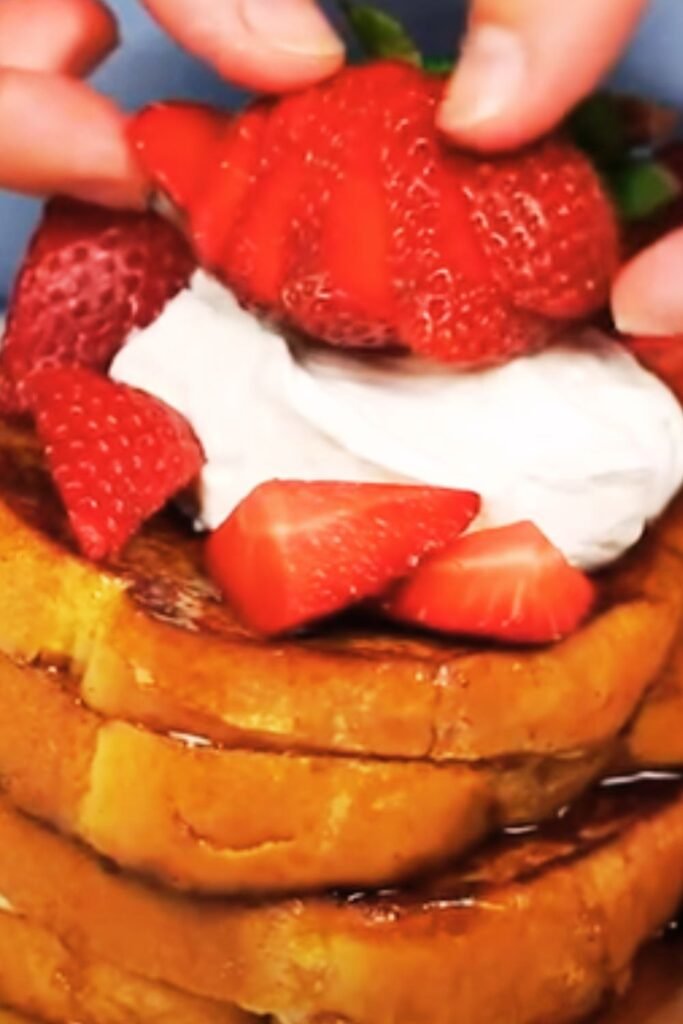
Serving Suggestions and Accompaniments
Cream cheese stuffed French toast is rich and satisfying on its own, but the right accompaniments can elevate it to restaurant-quality status. I’ve experimented with numerous combinations and discovered several that consistently impress.
Classic Toppings:
- Pure maple syrup, warmed
- Fresh berries (strawberries, blueberries, raspberries)
- Powdered sugar dusting
- Whipped cream or whipped butter
- Chopped toasted nuts
Gourmet Additions:
- Berry compote made with fresh or frozen fruits
- Caramelized bananas with cinnamon
- Lemon curd drizzle
- Honey with lavender
- Mascarpone cream with vanilla
Savory Balance:
- Crispy bacon strips
- Turkey or chicken sausage
- Fresh fruit salad
- Greek yogurt with honey
- Mixed nuts and seeds
The richness of the cream cheese filling means a little goes a long way with toppings. I typically serve two slices per person with a modest selection of accompaniments rather than overwhelming the plate.
Presentation Tips:
- Arrange slices slightly overlapping on warmed plates
- Drizzle syrups in artistic patterns
- Garnish with fresh herbs like mint for color contrast
- Serve toppings in small bowls for customization
- Warm plates in a low oven for restaurant-style presentation
Storage and Make-Ahead Options
One of the advantages of cream cheese stuffed French toast is its flexibility for meal planning. I often prepare components ahead of time for stress-free weekend mornings or special occasions.
Make-Ahead Strategies:
| Component | Storage Method | Duration | Notes |
|---|---|---|---|
| Cream Cheese Filling | Refrigerated, covered | 3-4 days | Bring to room temperature before use |
| Assembled Uncooked | Refrigerated, covered | Overnight | Ideal for morning preparation |
| Custard Base | Refrigerated, covered | 2 days | Whisk before using |
| Cooked French Toast | Refrigerated, wrapped | 2-3 days | Reheat in oven or toaster |
Freezing Instructions:
- Prepare and cook French toast completely
- Cool to room temperature on wire rack
- Wrap individual slices in plastic wrap
- Place wrapped slices in freezer bags
- Freeze for up to 2 months
Reheating Methods:
- Oven: 350°F for 8-10 minutes, covered with foil
- Toaster Oven: Medium setting, watch carefully to prevent burning
- Skillet: Low heat with small amount of butter, 2-3 minutes per side
- Microwave: 30-45 seconds on medium power (texture will be softer)
Troubleshooting Common Issues
Through years of making cream cheese stuffed French toast, I’ve encountered various challenges and developed solutions for each common problem.
Issue Resolution Guide:
Filling Leaks Out:
- Cause: Overfilling or inadequate sealing
- Solution: Use less filling, press edges firmly, cook at lower temperature
Soggy Texture:
- Cause: Over-soaking in custard or insufficient cooking
- Solution: Reduce soaking time, cook longer at medium-low heat
Burnt Exterior, Cold Interior:
- Cause: Heat too high
- Solution: Lower temperature, cook longer, cover with foil if necessary
Dry, Dense Result:
- Cause: Insufficient custard absorption or overcooked
- Solution: Ensure adequate soaking, monitor cooking time carefully
Custard Won’t Stick:
- Cause: Bread too fresh or custard too thin
- Solution: Use day-old bread, add extra egg to custard
Nutritional Considerations
Cream cheese stuffed French toast is undeniably indulgent, but understanding its nutritional profile helps in making informed decisions about portions and frequency of serving.
Approximate Nutritional Information (per serving):
| Nutrient | Amount | % Daily Value |
|---|---|---|
| Calories | 450-550 | 22-27% |
| Total Fat | 25-30g | 35-40% |
| Saturated Fat | 12-15g | 60-75% |
| Cholesterol | 200-250mg | 65-85% |
| Sodium | 400-500mg | 15-20% |
| Carbohydrates | 35-45g | 12-15% |
| Protein | 15-20g | 30-40% |
Healthier Modifications:
- Use reduced-fat cream cheese to lower calorie content
- Substitute egg whites for some whole eggs in custard
- Choose whole grain bread for added fiber
- Serve with fresh fruit instead of syrup
- Use Greek yogurt mixed with cream cheese for protein boost
While this dish is best enjoyed as an occasional treat, these modifications can make it slightly more nutritious without significantly compromising taste or texture.
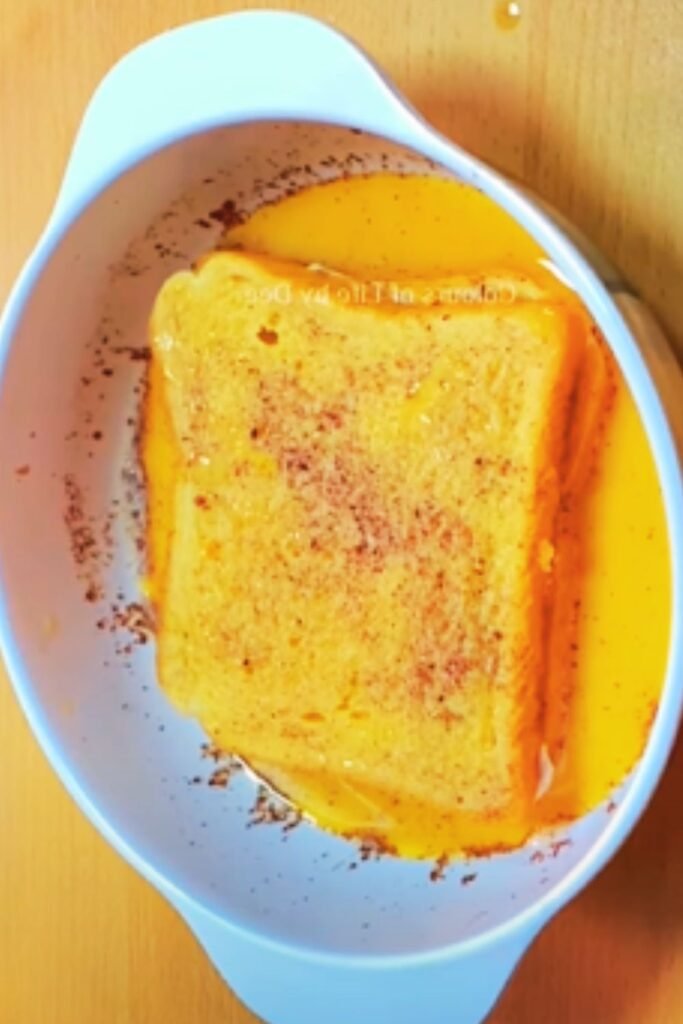
Seasonal Variations and Holiday Adaptations
One of the joys of cream cheese stuffed French toast is its adaptability to different seasons and occasions. I’ve developed several themed variations that make this dish appropriate for various celebrations throughout the year.
Spring Variations:
- Lemon cream cheese with fresh strawberries
- Orange zest filling with mixed berry compote
- Vanilla cream cheese with rhubarb sauce
- Honey lavender cream cheese with edible flowers
Summer Adaptations:
- Peach cream cheese with cinnamon
- Berry swirl filling with fresh mint
- Coconut cream cheese with tropical fruits
- Light mascarpone filling with fresh herbs
Fall Inspirations:
- Pumpkin spice cream cheese with maple syrup
- Apple cinnamon filling with caramel sauce
- Maple pecan cream cheese with candied bacon
- Cranberry orange filling with spiced butter
Winter Celebrations:
- Eggnog cream cheese with nutmeg
- Peppermint cream cheese with chocolate drizzle
- Gingerbread spice filling with cream sauce
- Rich chocolate cream cheese with raspberry sauce
Each seasonal variation requires minor adjustments to the base recipe while maintaining the fundamental technique. These adaptations allow me to serve cream cheese stuffed French toast year-round while keeping the experience fresh and exciting.
Questions and Answers
Q. How thick should the bread slices be for cream cheese stuffed French toast?
The ideal thickness for bread slices is 1 to 1.5 inches. This provides enough space to create a substantial pocket for the cream cheese filling while maintaining structural integrity during soaking and cooking. Thinner slices won’t hold enough filling and may break apart, while thicker slices can result in uneven cooking.
Q. Can I prepare cream cheese stuffed French toast the night before?
Yes, you can assemble the stuffed French toast the night before and refrigerate it covered. However, I recommend not soaking it in the custard until you’re ready to cook. The bread can become too soggy if left in custard overnight. Instead, prepare the filling, stuff the bread, and store it covered in the refrigerator, then dip in custard just before cooking.
Q. What’s the best way to prevent the cream cheese filling from leaking out during cooking?
To prevent leaking, use the right amount of filling (about 2-3 tablespoons per slice), ensure the pocket is properly sealed by gently pressing the edges together, and cook at medium-low heat. High heat can cause the bread to cook too quickly on the outside while the inside expands and forces the filling out. Also, avoid overfilling the pockets.
Q. Can I use low-fat cream cheese for this recipe?
While you can use low-fat cream cheese, the results will be different. Low-fat cream cheese has a different texture and can be more prone to curdling when heated. It also won’t provide the same rich, creamy mouthfeel as full-fat cream cheese. If you choose to use it, make sure it’s at room temperature and consider adding a tablespoon of heavy cream to improve the texture.
Q. How do I know when the French toast is fully cooked inside?
The French toast is properly cooked when the exterior is golden brown and the bread feels firm when gently pressed in the center. The internal temperature should reach 160°F if you’re using a thermometer. You can also make a small cut in one piece to check that the custard has set and the cream cheese is warmed through but not melted completely.
Q. What type of pan works best for cooking cream cheese stuffed French toast?
A heavy-bottomed skillet or griddle works best because it provides even heat distribution and prevents hot spots that could cause burning. Cast iron, stainless steel, or a good non-stick pan all work well. The pan should be large enough to cook 2-4 slices at once without overcrowding, which can cause uneven cooking.
Q. Can I freeze cooked cream cheese stuffed French toast?
Yes, you can freeze cooked French toast for up to 2 months. Cool the cooked slices completely, wrap them individually in plastic wrap, and store in freezer bags. To reheat, thaw overnight in the refrigerator and warm in a 350°F oven for 8-10 minutes, or toast directly from frozen in a toaster oven on a lower setting.
Q. Why does my custard sometimes curdle when I make it?
Custard can curdle if you add cold liquid to eggs too quickly or if you overmix. To prevent this, bring your milk and cream to room temperature before adding to the eggs, add the liquid gradually while whisking, and avoid over-beating the mixture. If curdling occurs, strain the custard through a fine-mesh sieve before using.
Q. How can I make my cream cheese stuffed French toast more crispy?
For extra crispiness, use day-old bread, don’t over-soak in custard (2-3 minutes per side maximum), and cook at the right temperature (medium-low). You can also press the French toast gently with your spatula while cooking to ensure good contact with the hot pan. Adding a small amount of butter to the pan for each batch also helps achieve a crispy exterior.
Q. What’s the difference between using challah versus brioche for this recipe?
Both challah and brioche work excellently, but they offer different characteristics. Challah has a slightly denser texture and subtle sweetness that pairs beautifully with cream cheese filling. Brioche is richer and more buttery, creating a more luxurious final product. Challah tends to hold its shape better during cooking, while brioche creates a more tender, custardy interior. Choose based on your preference for richness and texture.
